Technologies
iOS 17: The New iPhone Features I’m Most Excited About
StandBy mode, a new passcode grace period and more are expected to come to your iPhone in the fall.
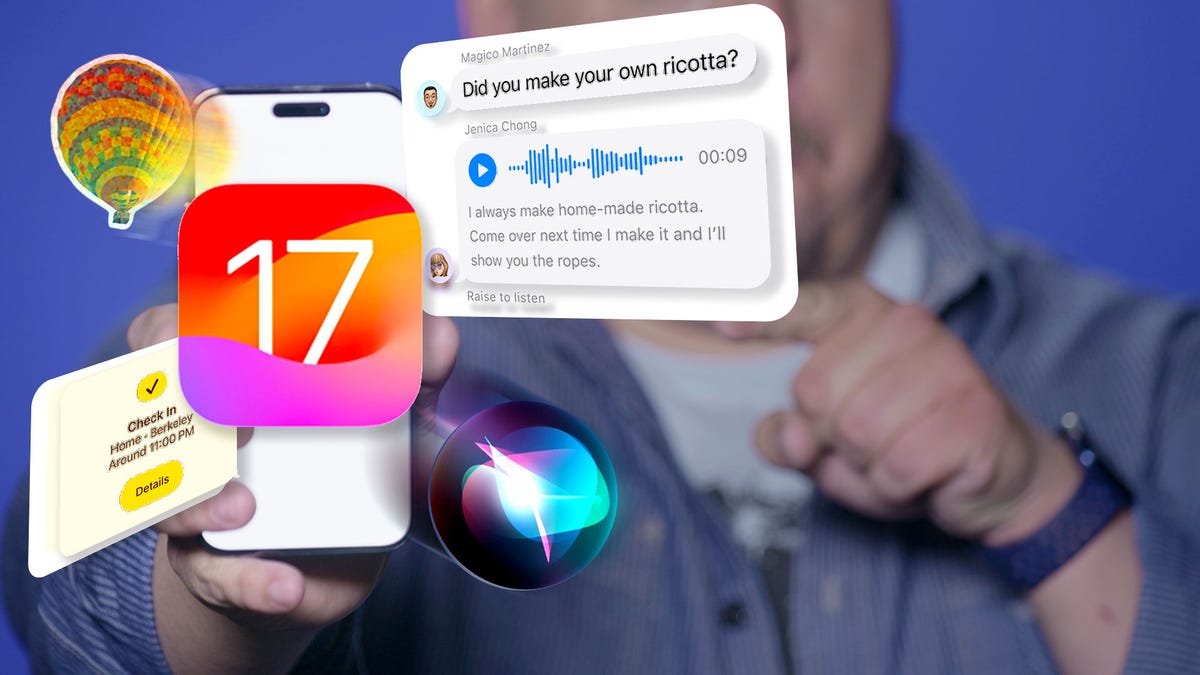
Apple announced a number of new software updates at its Worldwide Developers Conference, including the iPhone’s next software version, iOS 17. While the next iOS won’t be available to the general public until the fall, the software brings a lot of new and exciting features to your iPhone.
I switched to iOS from Android about a decade ago, and I’ve been testing iOS 16 betas since last year. While iOS 17 doesn’t fulfill all my iOS wishes, it has some new features that I’m really looking forward to.
Here are the cool and useful new iPhone features I’m most excited about in iOS 17.
StandBy mode

StandBy mode can show you what you’re listening to, the time and more.
With iOS 17, you get a new mode called StandBy. If you enable this mode on your iPhone while it’s charging and in landscape mode, your phone can act as a smart display. It will be able to display the time, widgets, Live Activities and more in this mode.
This feature is helpful, especially if you charge your phone in your kitchen while you cook or on your bedside table at night, but it won’t work for all iPhones. Right now, only the iPhone 14 Pro and Pro Max can use this feature effectively because of these models’ always-on display
. Earlier iOS 17-compatible iPhones can use StandBy mode, but your screen will turn off at a certain point.
72-hour passcode grace period
Have you ever changed your passcode, and forgotten what it is later when trying to log into your device? In iOS 17, your old passcode can be used for 72 hours to reset your new passcode in case you forget what you set it as. This new feature will surely save people — myself included — a big headache.
Autocorrect gets an improvement
Your iPhone’s keyboard in iOS 17 will get an upgrade. The keyboard will use a transformer model, similar to what OpenAI uses in its language models, so it’ll better predict what you’ll type next, whether that’s a name or a curse word. Autocorrect will also be able to help with grammar, similar to word processing software like Microsoft Word.
While this is all very cool and helpful, my big takeaway is I won’t have to retype swear words multiple times in order to get them to stay in a message. I’ve probably wasted entire days of my life correcting words like «duck» and «shot» back to my intended curse, so I’m excited to save myself that time.
New Journal app
Journaling can help you manage stress, achieve your goals and more, and your iPhone will get a new journaling app, called Journal, later this year with iOS 17. Other journaling apps are out there already, but Apple’s will use on-device machine learning to create personalized prompts to help you out. You’ll also be able to schedule notifications to remind yourself to write. The app keeps all entries private with on-device processing, end-to-end encryption and the ability to lock the app.

The icon for the new Journal app in iOS 17.
If you’re more comfortable typing than using a pencil or pen and notebooks, this app could help you get into, and stay consistent with, journaling. Even if you already journal regularly, you could get some benefits from the app. I’ve been journaling for years, and while I won’t give up my notebooks or pencils, I’ll probably use this app to help me reflect on my day when I can’t think of what to write — it happens more often than you might think.
New Messages improvements and features
Messages gets some upgrades with iOS 17, too. The new Check In feature, for example, lets you quickly and easily tell a family member or friend that you made it to your destination. And if you’re a parent you can use this new feature to make sure your child made it safely to their friend’s house.
You will also be able to jump to the first message you haven’t seen in a conversation in Messages with iOS 17. This can be especially helpful if you’re in a lively group chat. Imagine you go into an hour-long meeting and come out to find the group chat you’re in with your friends has 50 notifications. With iOS 17 you can go back to the first unread message and read all the context of the latest drama. After all, no one likes spoiled tea.
And if you want to reply to a specific message in Messages, you can also swipe on that message to reply to it directly. Before you had to long hold on the message and select Reply.
You can also create stickers for messages from your photos. Apple calls these Live Stickers, and you’ll be able to add effects to these stickers and save them in your iPhone for quick access later. Now you can make your pet’s side-eye into a fun sticker — your pet will probably still be annoyed.
New Contact Posters
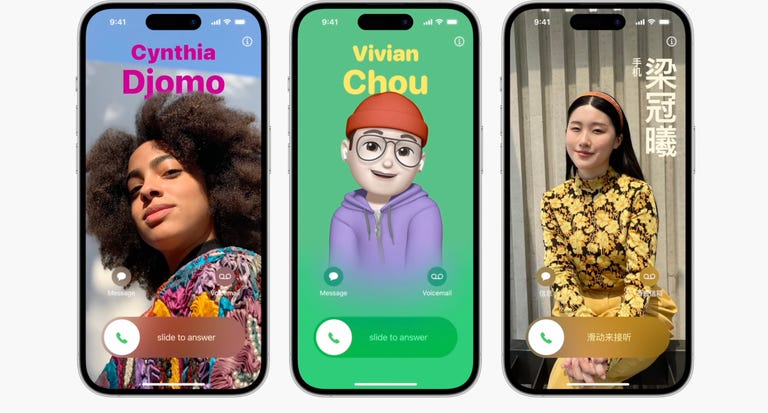
Contact Posters aim to make your contact cards more compelling.
A fun new feature that iOS 17 brings to your iPhone is Contact Posters. Think of these posters as highly customizable contact cards. On previous iOS versions, you could differentiate contacts with their own ringtones and thumbnail photos on your phone. Contact Posters takes this further, letting you customize contacts with emoji pictures, editing the color and font of contacts and more.
Apple also said Contact Posters will be available for third-party calling apps, not just your iPhone’s contacts.
This feature feels like the integration of Apple’s customizable lock screens with Contacts, and it makes me think Apple will one day let you customize other apps and features on your iPhone. Hopefully Apple will continue to give people more customization options in the future, like letting you edit the display, color and font for different chats in Messages.
Delete password verification messages automatically
In iOS 17, if you go to Settings > Passwords > Password Options, there is a new option called Clean Up Automatically under Verification Codes. If enabled, this option will automatically delete messages in Messages and Mail that contain verification codes after you’ve inserted the code using AutoFill.
I like to keep my messages and email tidy, and this feature will surely help me in that pursuit. When I open Messages or Mail I want to see messages from my friends and family, not random messages filled with code.
Make a grocery list in Reminders
To access this feature you have to upgrade your Reminders app after upgrading to iOS 17. The app will prompt you to upgrade when you open it the first time after downloading iOS 17. Afterward, there are a few steps to make a grocery list.
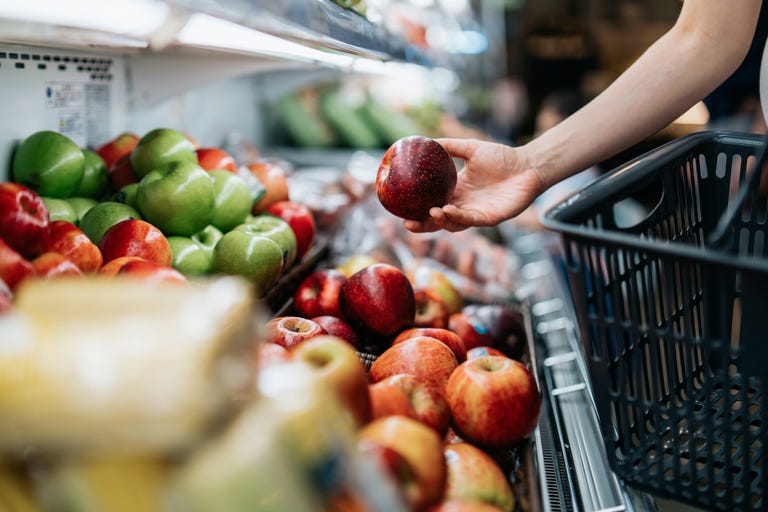
In iOS 17, the Reminders app can sort your grocery list for you.
1. Open a new reminder.
2. Tap the three dots (…) in the top-right corner of your screen.
3. Tap List Info.
4. Tap Standard next to List Type to select Groceries.
Once enabled, Reminders will automatically separate different grocery items into sections like Produce and Breads & Cereals.
I usually use Notes to make a grocery list, and it works fine. But my list is typically a jumbled mess that doesn’t adhere to rhyme or reason, which means I backtrack through the store to grab something I forgot about. This feature should make it easier to keep track of what I need from certain sections of the store, saving me the time and frustration of walking through the store two or three times.
Conversation Awareness on AirPods
The second-generation AirPods Pro are getting a few new upgrades with iOS 17, like Adaptive Audio and Personalized Volume, to give you a better listening experience, but Conversation Awareness is the new feature I’m most excited about.
With Conversation Awareness, second-generation AirPods Pro will recognize when you start talking, lower the volume of your music, reduce background noise and amplify the voices in front of you. No more fumbling with your AirPods or iPhone to turn down the volume to say «Hi» to someone.
This is another feature Apple will hopefully build and expand upon. A future version of this software might allow your AirPods to recognize when someone within a certain range is talking to you and lowers the volume automatically.
No more ‘Hey, Siri’

You don’t need to say, «Hey, Siri» in iOS 17 if you don’t want to.
On iOS 17, you no longer have to greet Siri to activate it. With the update, you can just say «Siri» and the digital assistant will activate and listen for any questions or commands you might have, similar to how you can address Amazon’s digital assistant, Alexa.
You can also still greet and be respectful to your digital assistant; that way if there’s a robotic uprising in the future, the robots might leave you alone because you were nice to their great-grandparent, Siri. I know what I’m picking.
Back-to-back Siri requests
You’ll also be able to ask Siri back-to-back requests with iOS 17. So once you activate Siri, you can ask your digital assistant to send a text to your partner, then ask Siri to set an alarm for later without having to say «Hey Siri» or «Siri» again.
This will make talking with Siri feel more conversational, and for me, it’ll help me keep my train of thought when I’m asking for Siri’s help.
AirTags can be shared with more people
AirTags are a good way to keep track of personal items, like your wallet or luggage. With iOS 17, AirTags can be registered with more than one person, making it easier for friends and family to keep track of items. The update also allows multiple people to use the same item, like a piece of luggage, without changing trackers.

AirTags can be registered to more people in iOS 17.
The new feature can also cut back on some minor AirTag annoyances. If you’re with someone who carries an AirTag with them, you’ll receive a notification that an unknown AirTag is traveling with you. While these notifications can help people guard against unwanted tracking, receiving these warnings can be tedious if the AirTag belongs to your partner or a friend.
The Maps app gets a boost
Apple’s Maps app is getting an upgrade with iOS 17. With the update, you’ll be able to download a map for a specific area, access turn-by-turn navigation, see estimated times of arrival and more while offline. Apple also said park trails in the US will be easier to find and EV drivers will be able to see charging station availability within the app.
Being able to use Maps offline can be very helpful if you’re a hiker and hiking an unknown trail, or if you’re visiting or driving through a remote area. This new feature, as well as the iPhone 14’s Emergency SOS via Satellite and the Apple Watch Ultra, makes it feel like Apple is making a push to make products for all your home, office and outdoor digital needs.
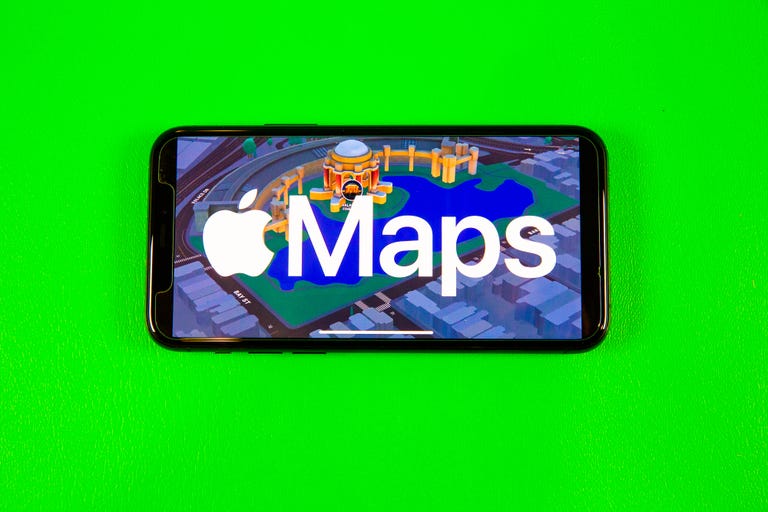
In Maps on iOS 17, you can select how large of an area you want to download.
Sharing is easier with AirDrop and NameDrop
With iOS 17, you’ll be able to share content more easily with others using Airdrop and a new functionality called NameDrop.
With the next iOS version, you won’t need to stay in range of another person to finish sharing content with them via AirDrop. If you’re AirDropping a lot of files and it’s taking a while, as long as you started the process within range, you don’t have to stay in range for the transfer to finish. You’ll also be able to start listening to music or watch a video with others via SharePlay by bringing your iPhones together.
NameDrop is a new functionality that lets you share contact information with another person by bringing your iPhone or Apple Watch close to their device.
Sensitive content warnings
This new iOS 17 feature is meant to help protect you from any unwanted nude images or videos you might run across. You can blur those images or videos before you view them, and this feature will be available in Messages, AirDrop, Contact Posters in the Phone app, FaceTime messages and third‑party apps, according to Apple.
Looks like some guys on dating apps will have to figure out how words work and not just send unsolicited nudes to people.
Apple released iOS 17 to developers Monday, and beta testers will be able to download a beta version of the software in July — here’s how you can sign up to be an iOS beta tester. Apple plans on releasing iOS 17 to the general public in the fall.
For more Apple news, check out CNET’s WWDC recap and what to know about Apple’s Vision Pro headset and its new 15-inch MacBook Air.
Technologies
Can Chemicals Turn My Orange iPhone 17 Pink? Here’s What I Found Out
There are reports that some cosmic orange iPhone 17 Pro handsets are turning pink. I threw chemicals at my iPhone to see what would happen.
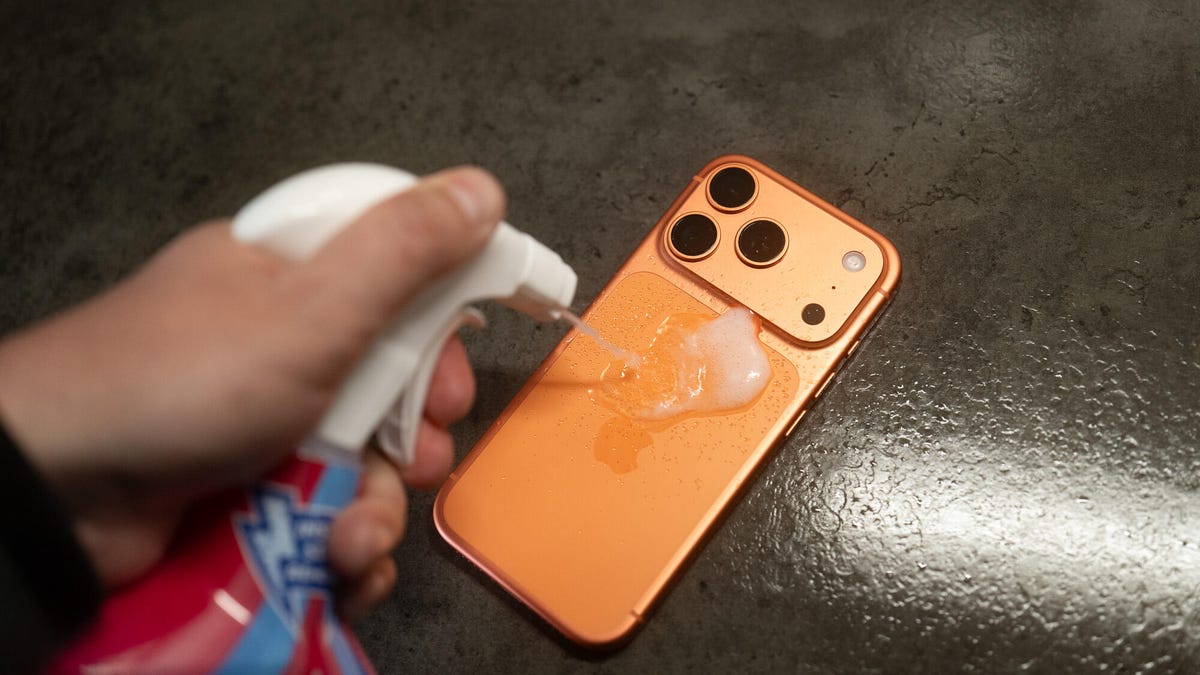
A recent Reddit thread suggests that it’s possible for a cosmic orange iPhone 17 Pro to turn vibrant pink. As PCMag’s Eric Zeman noted, it’s likely that the phone has been discolored by cleaning substances that affected the finish, turning it from vibrant orange to a wild hot pink. Sure, this might technically be a fault, but in all honesty I love pink phones and the idea of a hot pink iPhone 17 Pro filled me with joy. So I wanted to see if I could test the theory and see just what color-changing effects various household cleaners might have on my phone.
It’s important to note here that the iPhone 17 Pro I used was bought by CNET for the purposes of testing. Had I paid over $1,000 of my own money I wouldn’t be so reckless in smearing it with chemicals that could potentially irreparably harm it. And you shouldn’t either. If you need to clean your phone, do it safely. Disclaimer aside, let’s dive in.
The chemicals
I bought two chemicals to test this out. Zeman explains that it may be oxidation that caused the color to change and that hydrogen peroxide could do this. I couldn’t find this over the counter in the UK, so I instead bought an «oxy-active» stain remover spray that, among other things, contains «oxygen-based bleaching agents» which sounded ideal. Apple also clearly states «don’t use products containing bleach or hydrogen peroxide» on its support page so, naturally, I bought some thick bleach too.
Oxy application
I started by spraying the oxy cleaner on a microfiber cloth until it was noticeably wet from the liquid and then liberally applied this all over the rear of the iPhone. The Reddit user with the affected phone showed that it only affected the metal parts, not the glass back panel, so I made sure to focus my attention on the sides and camera bar.
With the phone well and truly doused in chemicals that have no business being anywhere near a phone, I left it to sit and think about what it had done for 30 minutes — after which time I wiped it dry and took a close inspection. Disappointingly, my phone was still factory orange, rather than «what the hell have you done to your phone» pink. Time to move on.
Bleach blast
I opened the bleach and trying hard not to think about my days as a middle school cleaner, applied a liberal blob of the stuff to a cloth and smeared it over the defenceless phone, concentrating again on the metal areas. I definitely should have worn protective gloves for all of this so please make sure you take better care of yourself than I do if you do anything with bleach.
Again, I gave it a 30-minute settling in period before cleaning it off and inspecting the results.
The phone remained as orange as ever, looking as box fresh as it was the day before when it was, indeed, box fresh. The orange color hadn’t changed and now almost 24 hours later there’s still no sign of discoloration of any kind.
Is the pink iPhone 17 real?
I can’t say with any certainty whether the Reddit user’s images of a pink iPhone 17 Pro are real or not. The cuddly human side of me wants to take them at their word, while the journalist in me is sceptical. What I can say with certainty is that putting your orange iPhone into close contact with household cleaning products isn’t going to win you a funky, ultra-rare pink hue that you could sell on eBay for a small fortune.
It’s possible that using pure peroxide could be the thing that does it, but to be honest, if you’re going out of your way to throw industrial-grade chemicals at your phone then you may as well just directly try and dye it. My goal here was to see how susceptible the orange model is to everyday household cleaners such as kitchen cleaner or bathroom bleach — the sort of things it might naturally come into contact with in routine use. And what I’ve found is that, no, it won’t ruin the nice orange color. But it’s probably still not good for your phone.
Technologies
My Teen Loves Her Apple AirPods Pro 2 and You Will Too With This $100 Off Deal for Black Friday
Apple’s AirPods Pro 2 have everything you could want from a pair of wireless earbuds, plus a steep discount.
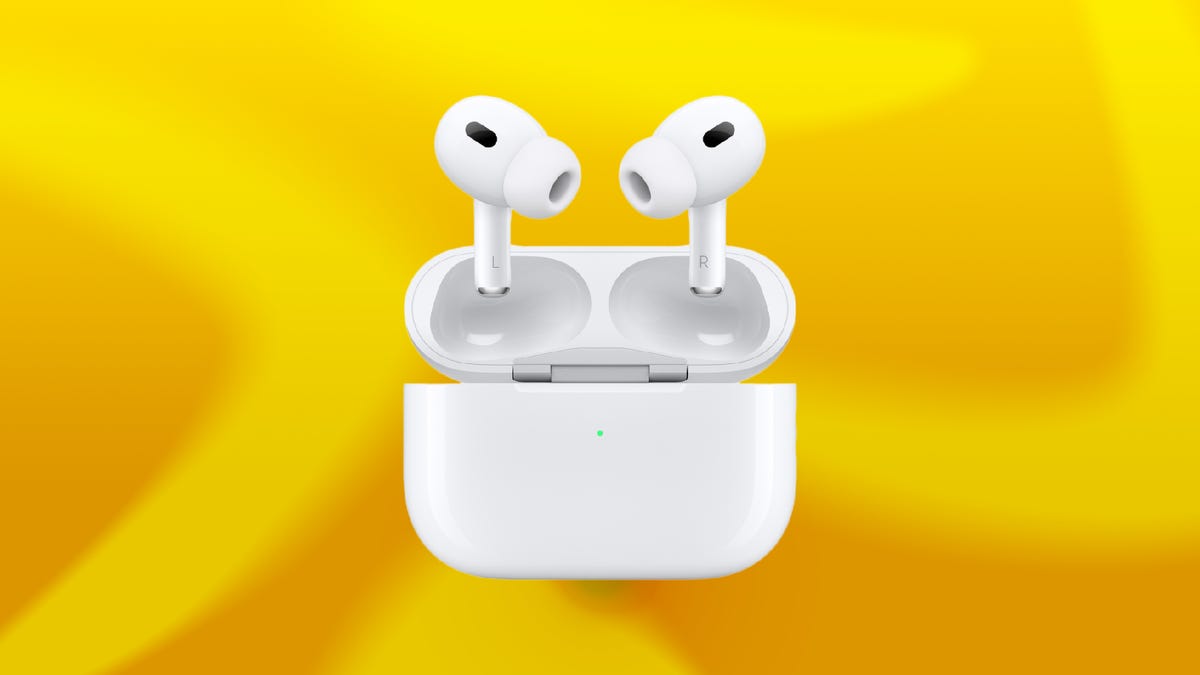
Black Friday deals: The Apple AirPods Pro 2 are some of the best personal audio gear on the market, even if they aren’t the latest model anymore. Sure, Apple’s AirPods Pro 3 are the newest earbuds in the lineup but the AirPods Pro 2 are still an excellent pick for most people.
They’re an even better buy this week during early Black Friday sales when you can get your hands on a pair of Apple AirPods Pro 2 at a discount. Right now, Walmart is shaving a massive $100 off the AirPods Pro 2, dropping the cost to $139. That’s one of the lowest prices we’ve seen — but we doubt this deal will stick around for long.
Don’t miss any of our unbiased tech content and lab-based reviews. Add CNET as a preferred Google source.
HEADPHONE DEALS OF THE WEEK
-
$248 (save $152)
-
$298 (save $131)
-
$170 (save $180)
-
$250 (save $200)
CNET’s key takeaways
- You can get these amazing earbuds for just $139 right now at Walmart.
- My teenager loves everything about them.
- The sound quality is exceptional.
- The noise cancellation can help give you some peace, even in a busy home.
My 13-year-old daughter loves her music and her privacy, and for years she has wanted a pair of AirPods. They’re not cheap so I’ve only been getting her more budget options, like the Amazon Echo Buds, as a result. These kept seemingly disappearing, though, so I finally ponied up for the AirPods Pro 2.
I picked them up during last year’s sales, and they were definitely well-received. She’s happy, she uses them every day, and she hasn’t lost them yet. The AirPods Pro 2 are currently on sale at Walmart for $139, a nice price for a high-quality pair like these, and one of the lowest we’ve seen.
What about the AirPods Pro 3?
The AirPods Pro 3 weren’t available at the time I bought the AirPods Pro 2, but they were rumored, and I didn’t wait to see what they offered. As CNET’s resident headphone expert, David Carnoy summarized in his AirPods Pro 3 and Pro 3 comparison, the newer model is «significantly improved in the four most important areas: fit, sound quality, noise cancellation and battery life.» They also have heart-rate monitoring, like the Beats Powerbeats Pro 2.
Hey, did you know? CNET Deals texts are free, easy and save you money.
While these are undoubtedly all important things, a lot of people aren’t going to notice the differences or make the most of the new features. With the AirPods Pro 3 being newer, they’re on a smaller sale and are currently available at Amazon for $220, which is $30 off the list price.
Why I didn’t get the AirPods 4 instead
Why did I choose AirPods Pro 2 instead of the AirPods 4 with ANC? First, as I mentioned in another article about a different pair of earbuds I bought, I think sealed, in-ear buds are better than open-design models like the AirPods 4. The seal creates another layer of noise isolation and contributes to superior sound quality, and if you want to pay attention to the world you can always engage ambient sound mode, which Apple calls transparency mode.
Also a factor was that, at the time, Carnoy considered the Pro 2 the best Apple noise-canceling wireless earbuds: «While we’re quite impressed with those new models — and with the AirPods 4 ANC in particular — the AirPods Pro 2 remain arguably the best Apple AirPods you can buy if you don’t mind having silicone ear tips jammed in your ears,» he said.
My daughter uses earplugs all the time to help her sleep, so she definitely qualifies as somebody who’s comfortable stuffing things in her ears. Like her fingers, when I start using words like «sigma,» «skibidi» and «relatable» to try to relate to her.
I asked Carnoy about the Pro 2s potentially not fitting in her kid-size ears and he reassured me that the range of eartips that come with the Pro 2s «now include XS, so they should fit.»
Do AirPods make a great gift?
It took me years to finally understand, but yes, for someone looking for wireless earbuds, AirPods — especially the Apple AirPods Pro 2 — make the perfect gift, regardless of whether you’re a teenage girl.
Join Our Daily Deals Text Group!
Get hand-picked deals from CNET shopping experts straight to your phone.
By signing up, you confirm you are 16+ and agree to receive recurring marketing messages at the phone number provided. Consent is not a condition of purchase. Reply STOP to unsubscribe. Msg & data rates may apply. View our Privacy Policy and Terms of Use.
Technologies
If You’re Flying for the Holidays, This Bluetooth Dongle Transforms In-Flight Movies, and It’s 35% Off for Black Friday
Watch airplane movies just like you would at home with this game-changing device.

Air travel for the holidays can be stressful, especially when winter weather or flight delays force a change of plans, but one perk of flying still remains — watching new-release movies. However, in-flight entertainment on most airlines usually requires a wired set of earbuds. (And the ones the airline hands out are so bad they may as well not even be connected.)
I’d far prefer to use my wireless, noise-canceling AirPods Pro, but they connect only via Bluetooth. There’s a simple tech solution that makes viewing movies on the plane feel more like watching them on your couch.
The AirFly is a simple Bluetooth dongle that allows me to connect my wireless earbuds directly to the airplane’s entertainment system, eliminating the need for adapters or wired workarounds.
It’s become a must-pack item in my travel bag. Since I started using it, I’ve stopped dreading in-flight audio and finally get to enjoy movies on the plane. If you fly often, this little gadget could completely change how you travel. And the base level AirFly SE is 35% off for Black Friday at Amazon.
The AirFly Pro lets me enjoy in-flight entertainment
The AirFly Pro from Twelve South is a minimally designed dongle that allows me to connect to the 3.5mm headphone jack in my airplane seat, enabling me to listen to in-flight entertainment on my noise-canceling earbuds.
All I have to do is pair the AirFly with the Bluetooth headphones I’m using, such as my AirPods Pro, plug the AirFly into the display in front of me, and I’m all set. I don’t even need to use my phone to connect the two devices.
There are several versions of the AirFly: the AirFly SE, which is currently on sale for $26 on Amazon and connects to just one set of headphones, the AirFly Pro at $55, the Pro V2 at $60 and the Pro 2 Deluxe at $70, which comes with an international headphone adapter and a suede travel case.
Hey, did you know? CNET Deals texts are free, easy and save you money.
I use the AirFly Pro, which has been a game-changer for me on flights. I’ve never had to worry about battery life since the AirFly Pro lasts for over 25 hours and can be fully charged in just three hours. I can also pair two separate pairs of headphones to a single AirFly Pro, in case I’m with someone else on a flight and want to watch the same movie or show.
And if that’s not enough, the AirFly Pro also doubles as an audio transmitter, allowing me to turn any speaker with a headphone jack, such as my old car stereo, into a Bluetooth speaker.
The AirFly Pro makes a great gift for any traveler
The AirFly Pro is the perfect present to give to someone who’s planning to travel this year. Besides my Anker MagSafe battery pack, the AirFly Pro has become my most treasured travel accessory when I fly, which is why I consider it one of those can’t-go-wrong gifts.
For more travel gear, here are our favorite tech essentials to travel with and our favorite travel pillows.
Join Our Daily Deals Text Group!
Get hand-picked deals from CNET shopping experts straight to your phone.
By signing up, you confirm you are 16+ and agree to receive recurring marketing messages at the phone number provided. Consent is not a condition of purchase. Reply STOP to unsubscribe. Msg & data rates may apply. View our Privacy Policy and Terms of Use.
-

 Technologies3 года ago
Technologies3 года agoTech Companies Need to Be Held Accountable for Security, Experts Say
-

 Technologies3 года ago
Technologies3 года agoBest Handheld Game Console in 2023
-

 Technologies3 года ago
Technologies3 года agoTighten Up Your VR Game With the Best Head Straps for Quest 2
-

 Technologies4 года ago
Technologies4 года agoBlack Friday 2021: The best deals on TVs, headphones, kitchenware, and more
-

 Technologies4 года ago
Technologies4 года agoVerum, Wickr and Threema: next generation secured messengers
-

 Technologies4 года ago
Technologies4 года agoGoogle to require vaccinations as Silicon Valley rethinks return-to-office policies
-

 Technologies4 года ago
Technologies4 года agoOlivia Harlan Dekker for Verum Messenger
-

 Technologies4 года ago
Technologies4 года agoiPhone 13 event: How to watch Apple’s big announcement tomorrow
